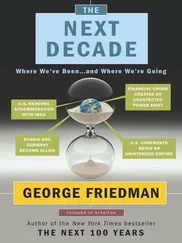Are Pets Truly Substitute Friends?
Animals often provide their owners with love, purpose, and security. Some researchers even suggest that pets are a good substitute for human companionship. It’s true that animals can encourage healthy behaviors—when you take your dog for a daily walk, you are also getting a walk. And they encourage a degree of responsibility and organization. As pet owners and fans, we weren’t about to argue a broad case against the benefits of having pets, but, over the long term, we wanted to see whether regularly interacting with pets produced measureable health benefits for the Terman participants.
In 1977, when they were in their sixties, the subjects were asked how often they played with pets—“never,” “seldom,” “occasionally,” or “frequently.” This was the perfect question, because we didn’t care if someone had a pet but never interacted with that pet.
Using this question and the long life data, we looked to see whether those who played more with pets were more likely to survive over the next fourteen years. Another surprise: they were not. Not at all. 82 82 We describe our study regarding pets in more detail in J. S. Tucker, H. S. Friedman, C. M. Tsai, and L. R. Martin, “Playing with Pets and Longevity among the Elderly,” Psychology and Aging 10 (1995): 3-7.
Perhaps many of these pet aficionados already had good social support from people, meaning that animal companionship had little to add. If this were true, playing with pets would not be important for the group as a whole, but it might be quite important for those who were socially isolated. For them, pets could be filling in the gap that would otherwise be filled with people. We ran the statistical analyses again, this time looking just at the socially isolated. But the results were the same. Playing with pets wasn’t associated with longer life.
We had to conclude that urging your elderly aunt who really doesn’t like animals to get a dog so she will have a health-promoting companion is probably not a worthwhile idea. Having a pet is great if it brings joy to your life, but we found no evidence that it will provide the social enrichment that is so important to long life.
Social Life and Misconceptions about Life Expectancy
The average life expectancy of an American born around the time of the Terman participants (about 1910) was forty-seven years. The average life expectancy of an American born in recent years is about seventy-nine. Still, it is totally incorrect to conclude that today’s middle-aged adults will live many, many years longer in retirement than did their predecessors.
The error arises from the fact that average life expectancy is computed from birth. For the Terman subjects’ generation, many children died at birth or shortly thereafter. Many others died of childhood diseases. The twentieth century saw tremendous advances in sanitation, housing, food supply, and vaccines, leading to a dramatic plunge in deaths during infancy and childhood. So-called modern medical cures have played a relatively minor role in increasing adult life span, something most people do not understand.
The truth is that the life expectancy of a sixty-year-old white American male has only increased by about four or five years during the last half century, and some of that is likewise due to better housing, nutrition, safety (such as seat belts), and sanitation. It is a great misconception (with serious implications) in our society that modern medicine has led to huge increases in the longevity of American adults.
This distinction is important for understanding and appreciating the significance of social support and healthy life pathways. The Terman subjects on healthy life paths, with great social networks, were much more likely to live into their seventies, eighties, and nineties, while their fellow participants (who were equally healthy and intelligent as children, but didn’t travel such healthy pathways) often succumbed before age sixty-five. The best surgical procedures and the most powerful pharmaceuticals of today are considered very successful if they extend life for several years. Of course if you are one of those patients, you are very grateful, but think of the much greater benefits that healthy pathways often produce—perhaps the decades of longer life that earlier sanitation advances, childhood vaccines, and public health measures achieved.
What It Means for You: Guideposts to Health and Long Life
The lives of the Terman participants showed that taking time to cultivate social networks is important not just to the quality of life but also to its quantity. Feeling good, staying calm, and breathing deeply can be signs of health but they are not its root causes. Instead, social relations should be the first place to look for improving health and longevity.
You may recall from the last chapter that John was not a religious person. Yet he lived a long life, and his social ties were a big part of his secret. For John, becoming more religious would not likely have improved his longevity because he was already enjoying the strongest benefits of being religious—the social elements. In contrast, Donna’s case is one where congregational life could have made a huge difference. Donna didn’t spend much time with friends or colleagues, focusing instead on raising her sons and just getting by after her divorce. When her sons were grown Donna pretty much quit going to church and became even more socially isolated. If Donna had instead become more involved in her church (or some other meaningful organizations), using her considerable intelligence to join with others to make a difference in her community, it very well might have improved her prospects for a long life.
John and Barbara found social connections in their careers. Barbara maintained additional social links through her congregation and extended network of friends. Linda’s ties were mostly through family and church groups, but the effect remained the same. It was not those who felt the most connected and appreciated, but those who had many actual ties in their social networks, and who were engaged with helping others, who lived longest.
It is worth reiterating that social networks represent an important—perhaps the most important—way to change one’s life pathway. In many ways, it is also a very doable fix, in a relatively straightforward manner. Repairing a troubled marriage or unproductive career is also very important to health but is quite difficult and will take a lot of time. In contrast, setting aside a few hours each week to volunteer, or joining a group that shares one of your passions, increases the size of your social network and provides opportunities to help others. You’re never too old and it’s never too late or too early to start this—and the returns can be enormous in terms of life’s quality and quantity.
CHAPTER 13
The Gender Gap in Long Life
Almost everywhere in the world, women outlive men. This fact is so well appreciated that it figured in the long-running joke of the comedian Alan King: “Do you know the six words that appear in every man’s obituary? He is survived by his wife. ”
Perhaps fittingly, Mr. King himself was survived by his wife of fifty-seven years, Jeanette. Yet although this female advantage in longevity has long been studied, it remains puzzling. Many things contribute to this mysterious phenomenon, and not always in intuitive ways. For example, women generally face more health problems during their lives, yet men die earlier of most major causes of death, including heart disease, cancer, and suicide. While examining the pathways of the Terman participants we uncovered many fascinating hints as to why the average woman outlives the average man.
Читать дальше











